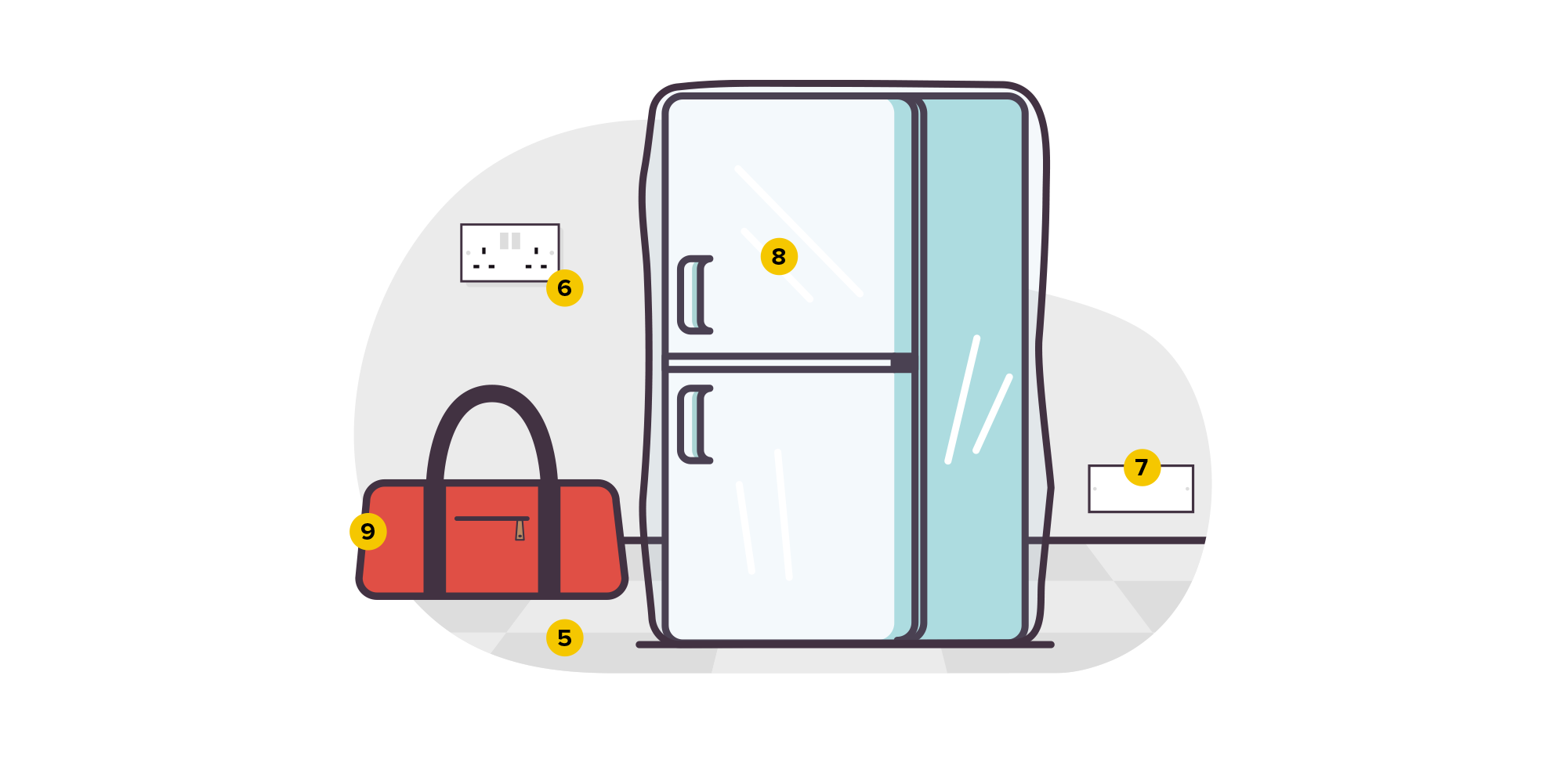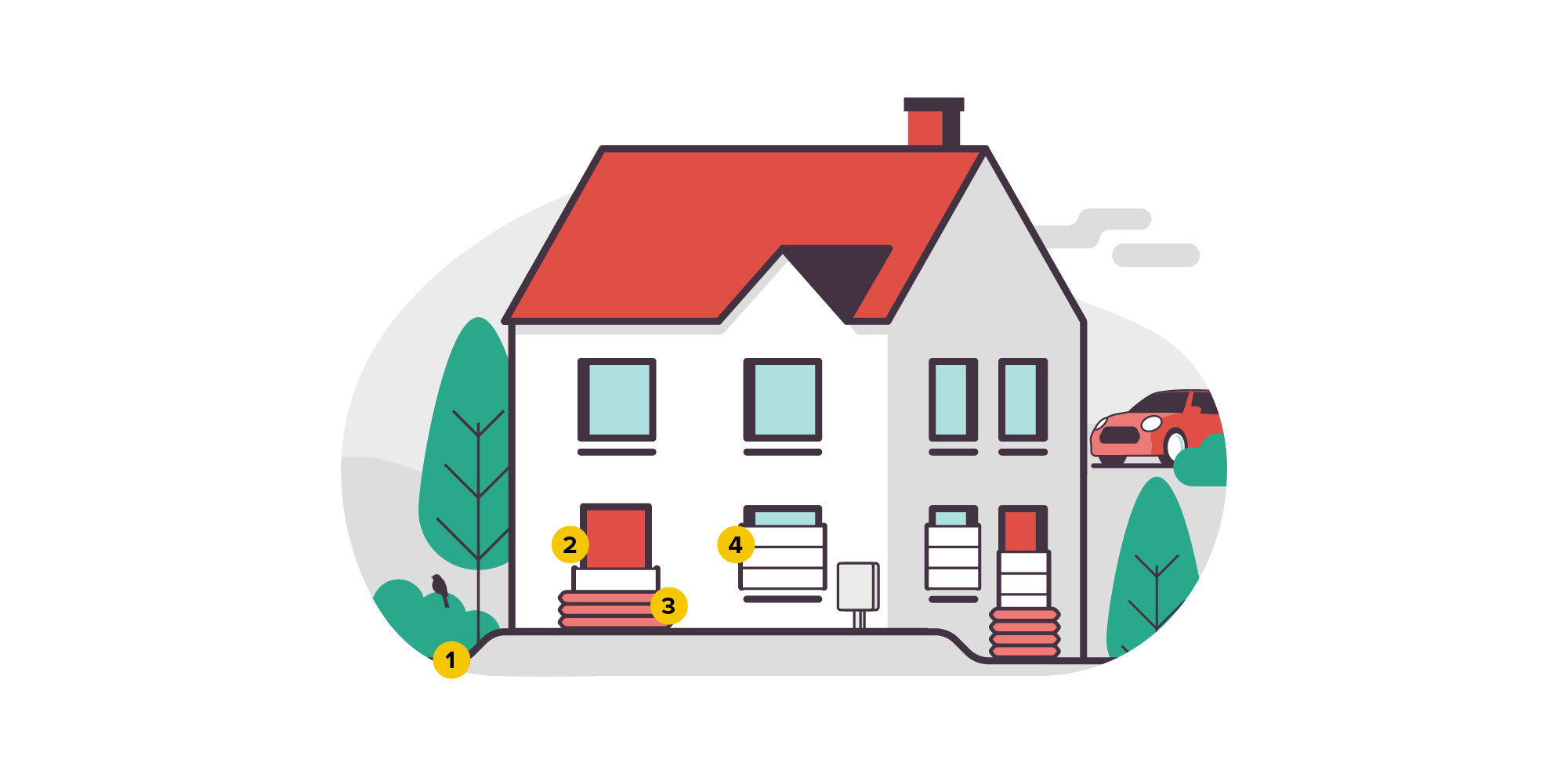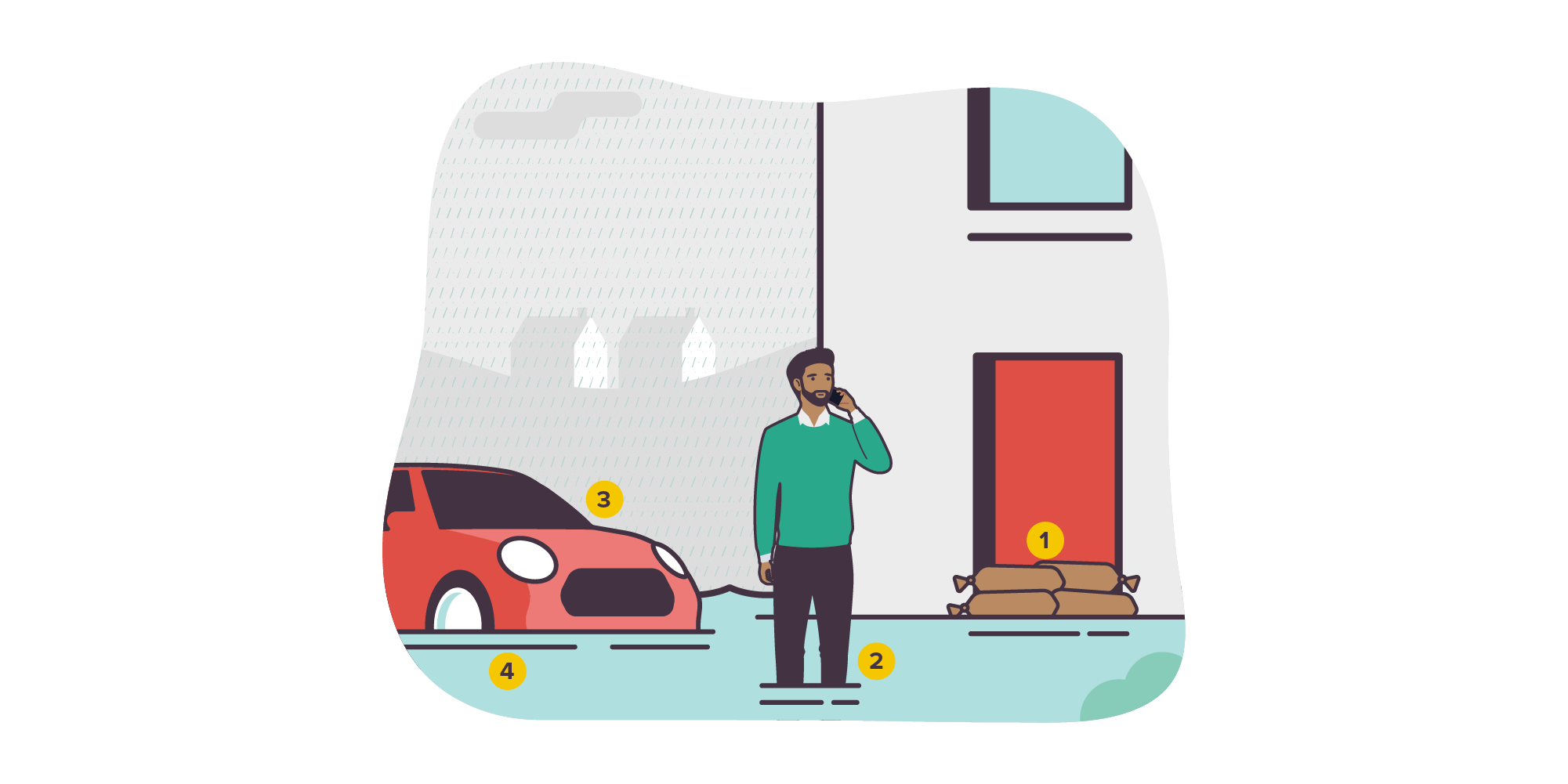What to do in the event of a flood?
WHAT TO DO IF A FLOOD ALERT IS ISSUED?
If you do receive a weather alert and your home is at risk of flooding, here is a check list for the final precautions you can take.
INTERNAL CHECKLIST
-
Take detailed photos
of your property and contents to help with any potential claim. -
Airbricks
Close the covers on your airbricks or use airbrick covers to stop flood water from entering. -
Floodsacks
These should be placed on both sides of your door. -
Drape curtains over their poles
unless you have time to remove them. -
Move valuables higher
Move what you can upstairs or to a higher level. -
Sinks
Put plugs in sinks and weigh them down to stop backflow in toilets.

-
Electricals
Unplug and move electricals. -
Protect large valuables
Get your large sealable bags to wrap up large items, e.g. electrical goods, sofas that may be too hard to move. Tip: Use wellies or buckets for table legs to reduce damage. -
Essential supplies
Get your emergency grab bag and essential supplies.

EXTERNAL CHECKLIST
-
Vehicles
Try to move vehicles to higher ground as soon as possible! -
Floodsacks
These should be placed on both sides of your door -
Mains supplies
Turn off your mains water, gas and electricity if it’s safe to do so.

WHAT NOT TO DO
-
Don’t use sandbags
use flood bags or sacks, as these are much more effective than sandbags. -
Try not to walk in the water
as it could be contaminated with sewage.
-
Avoid driving
on flooded roads. -
Don’t stop the car
in standing water, and drive through the highest section of the road slowly.
Lastly,
- Sign up for flood alerts if you haven't already, by phone, email or text.
- Check your home insurance to make sure you are covered for flood damage
- Keep yourself, your family and any pets safe
- Consider how you could help vulnerable friends or neighbours.

